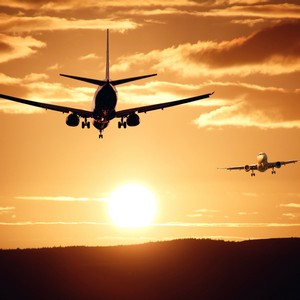
Day 1 : Arrival
Arrive at Mexico City airport where you will be met by your Travel the Unknown representative and transferred to your hotel. Overnight in Mexico City.
Overnight in Zócalo Central Hotel, Mexico City
Meal plan: n/a
Mexico boasts the ruins of some of the most ancient civilisations in history. Explore the lost cities of the Zapotecs, marvel at the pyramid complex of Teotihuacan and wander the archaeological complex of El Tajin. See the jungle pyramids at Chichén Itzá, enjoy the vibrancy and rich culture of Mexico City and relax by the shimmering lakes of Montebello as you take it all in.
Mexico City - Xochicalco - Malinalco - Atlantes of Tula - Teotihuacán - El Tajin - Xalapa - Veracruz City Tour - Oaxaca - Cantona - Monte Albán - Mitla - San Cristóbal de las Casas - Sumidero Canyon - San Cristóbal - Lakes of Montebello - Yaxchilan - Palenque - Templo Olvidado - Campeche - Uxmal - Merida - Chichén Itzá

Arrive at Mexico City airport where you will be met by your Travel the Unknown representative and transferred to your hotel. Overnight in Mexico City.
Overnight in Zócalo Central Hotel, Mexico City
Meal plan: n/a
Spend the day exploring Mexico City including visits to Templo Mayor and the National Anthropology museum. Overnight in Mexico City.
Overnight in Zócalo Central Hotel, Mexico City
Meal plan: Breakfast
A second day exploring Mexico City, including the archaeological site of Coyoacan, the floating gardens of Xochimilco and Plaza de las Tres Culturas. Overnight in Mexico City.
Overnight in Zócalo Central Hotel, Mexico City
Meal plan: Breakfast
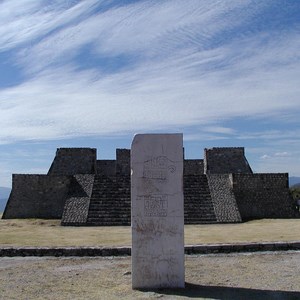
After breakfast, take a 2 hour bus ride from Mexico City to Xochicalco to see its ancient ruins. Then from Xochicalco travel to Malinalco, where you will discover one of the most impressive sites of Aztec civilisation. Return by bus to Mexico City and spend the evening at your leisure.
Overnight in Zócalo Central Hotel, Mexico City
Meal plan: Breakfast
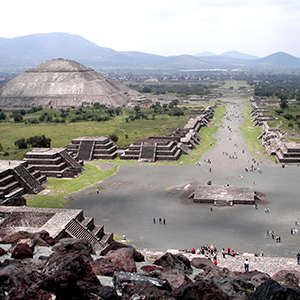
Excursion from Mexico City to the Atlantes of Tula, Next, travel to the ancient ‘New World’ of Teotihuacán. Later in the day, travel to Poza Rica for an overnight stay.
Overnight in La Quinta Inn, Poza Rica
Meal plan: Breakfast
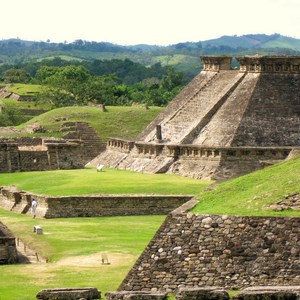
After breakfast, travel to El Tajin and explore its ruins. Later, journey to Papantla. After exploring the site, travel to Xalapa for an overnight stay.
Overnight in Holiday inn Express Xalapa, Xalapa
Meal plan: Breakfast
After breakfast explore the Anthropological Museum of Xalapa. Then travel to Cempoala, one of the largest cities of pre-Columbian times. Journey on to Veracruz and city tour of Veracruz on arrival. Overnight in Veracruz.
Overnight in Emporio Veracruz, Veracruz
Meal plan: Breakfast
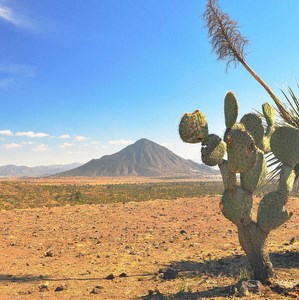
After breakfast, travel towards Oaxaca, stopping to see the archeological site of Cantona. Then, continue to Zapotitlan Salinas to explore its magnificent gardens. Arrive in Oaxaca for an overnight stay.
Overnight in Casa Conzatti, Oaxaca
Meal plan: Breakfast
In the morning visit Monte Albán. In the afternoon visit Oaxaca City, including the Church of Santo Domingo and the Museo Regional de Oaxaca. Evening at your leisure. Overnight in Oaxaca.
Overnight in Casa Conzatti, Oaxaca
Meal plan: Breakfast
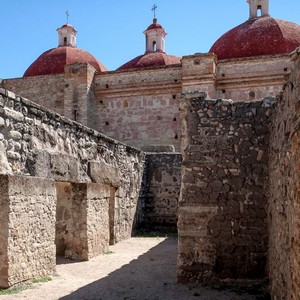
After breakfast, travel from Oaxaca to Mitla by bus. After exploring this mysterious archaeological site, visit a mescal distillery in Santiago Matatlán. Later, continue to Tehuantepec, with a hike to Guiengola on the way. Overnight in Tehuantepec.
Overnight in Hotel Calli, Tehuantepec
Meal plan: Breakfast
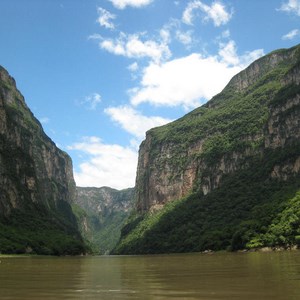
After breakfast, travel from Tehuantepec to Chiapa de Corzo. Upon arrival, take a boat trip through the Sumidero Canyon, explore the neighbouring National Park and visit a real functioning workshop to see how a marimba is made. Later, drive to San Cristobal and have a city tour of San Cristóbal de las Casas on arrival. Overnight in San Cristobal.
Overnight in Mansion del Valle San Cristobal, San Cristóbal
Meal plan: Breakfast
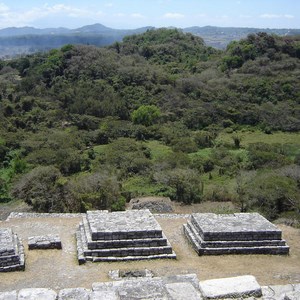
Travel to Chinkultic, and after exploring the area, make a trip to the Lagos de Montebello. In the afternoon, continue to Las Guacamayas for an overnight stay.
Overnight in Las Guacamayas Centro Ecoturistico, Las Guacamayas
Meal plan: Breakfast
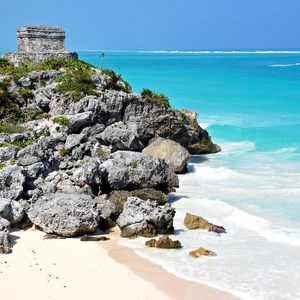
From Las Guacamayas travel to the Frontera Corozal where you will take a boat trip to Yaxchilan and explore the city. Later, explore the Lacandon rainforest and see the ruins of Bonampak. Travel to Palenque for an overnight stay.
Overnight in Chan-Kah, Palenque
Meal plan: Breakfast
Spend the day exploring the lost world of Palenque, and discover its ancient ruins. Overnight in Palenque.
Overnight in Chan-Kah, Palenque
Meal plan: Breakfast
Journey to Edzná to explore the ruins of these early settlements. Then take a tour of the city of Campeche. Overnight in Campeche.
Overnight in Plaza Colonial, Campeche
Meal plan: Breakfast
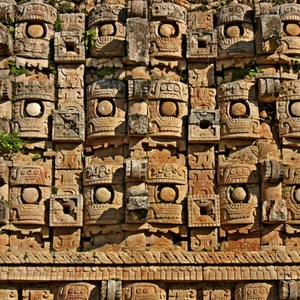
Visit Kabah and see the Palace of the Masks. Explore the Mayan City of Uxmal, and then journey to Labna. Overnight in Merida.
Overnight in Casa del Balam, Merida
Meal plan: Breakfast
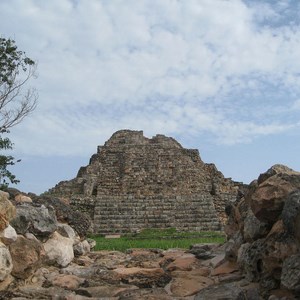
Travel from Mérida to the ruined site of Oxkintok. From there, continue to Xcambo, before returning to Mérida for an evening at your leisure. Overnight in Mérida.
Overnight in Casa del Balam, Merida
Meal plan: Breakfast
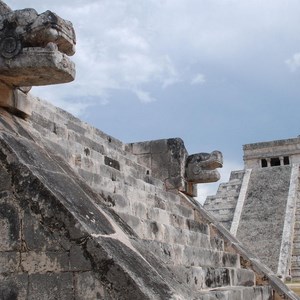
From Merida travel to Izamal and visit the town of Yucatan. Continue on to Chichén Itzá to see the jungle buildings. Return to Merida for an overnight stay.
Overnight in Casa del Balam, Merida
Meal plan: Breakfast

Travel from Mérida to Mayapan, and explore the ruins of Dzibilchaltún. Return to Merida and transfer to the airport for your return flight.
Meal plan: Breakfast
All accommodation subject to availability. Final accommodation choices will be confirmed after booking.

Centrally located in the heart of Plaza de la Constitución, the historical Zócalo Central Hotel is near many of Mexico City's main attractions, including the National Cathedral. Set in a charming building dating back to the 1980s, the hotel blends traditional architecture with modern comfort. All rooms are stylishly refurbished in a contemporary style and equipped with all modern amenities, including free WiFi and plasma TVs. The on-site Restaurant Balcon del Zocalo serves a variety of authentic Mexican cuisine, topped off with spectacular views over the city from the restaurant's rooftop terrace.

La Quinta Inn & Suites Poza Rica has 100 comfortable rooms and suites with all mod cons. The hotel has spectacular gardens and a beautiful infinity style pool with pool bar, as well as a restaurant serving international and regional cuisine. There is a unique view from the terraza bar, where you can enjoy the views and your favourite drink.

Located in downtown Xalapa, the Holiday Inn Express Xalapa is in the perfect location to explore the city, and discover its main attractions. You can walk to the Metropolitan Cathedral of Xalapa. The comfortable rooms offer complimentary Wi-Fi and there is a fitness centre on-site.

Looking over the historic Fort of San Juan de Ulúa, this hotel offers 3 swimming pools, a spa, 3 restaurants and room service available 24 hours a day. The restaurants offer a mix of Mexican cuisine as well as international dishes. Rooms are stocked with a mini-bar, iPod docking station and flat screen TVs.

Casa Conzatti in Oaxaca was once the home of Don Cassiano Conzatti - the Italian-born botanical explorer who researched and lived here in Oaxaca. The colonial-style hotel provides spacious and comfortable accommodation for those visiting the city. The restaurant, Magnolias, serves a fusion of famous Oaxacan dishes and international favourites.

Hotel Calli is located in the suburbs of Santo Domingo Tehuantepec. The bedrooms are decorated in a simple, yet contemporary fashion. They provide guests with access to WiFi, air-conditioning and satellite television. The on-site restaurant specialises in dishes of the Tehuantepec region. Guests can also make use of the other hotel facilities, which includes a games room and swimming pool.

Mansion del Valle San Cristobal is a colonial-style hotel in the centre of San Cristobal. The hotel has been designed and decorated in a traditional Mexican style. The bedrooms display a similar colonial charm to visitors, who will also have access to modern comforts that will allow for a relaxing stay. Guests can dine at Le Mechita, where they can choose between a selection of traditional and more contemporary Mexican specialties.

Las Guacamayas is an eco lodge located in the village of Reforma Agraria. The lodge is nestled in the heart of a community program which has protected the population of scarlet macaws since 1991. The lodge has large, comfortable cabins and a restaurant. There are boat trips along the river to spot wildlife and horses can also be rented out to explore the region.

Chan-Kah is an Eco-Hotel surrounded by lush tropical flora and fauna. What distinguishes Chan-Kah is that they have exclusively have Junior Suite cabins and suites which provide guests with comfort and privacy. Suites have pool, garden or jungle view, and each one is air conditioned and has a private terrace.

This new hotel in the Historic Center of Campeche is a delightful place to stay. Each comfortable room has a flat screen TV, multifunction telephone, air conditioning, ceiling fan, bathroom with shower and tub, electronic locks and smoke detector, safe and wireless internet. From the Plaza Colonial hotel you can also enjoy beautiful views of the cathedral city.

Spacious and bright with central air conditioning, telephone, color cable tv, soundproof windows, mini bar, hair dryer, bath and/or shower, hot and cold water.
Swim, dive and cruise the shores to discover Mexico's marine life
Explore Mexico's stunning mountains on foot
Unforgettable rafting and free-fall experiences in the heart of the jungle
Delve into Mexico's tapestry of craggy cliffs and copper-green canyons
Unwind on Mexico's idyllic white sand beaches
Trace Olmec, Aztec, Zapotec & Mayan roots
Trace the path of Mayan history - from antiquity to today
Discover the highlights of two Latin gems
Aztec ruins, Oaxacan flavours & colonial towns
The last bastion of indigenous Mexico
The festival where death never felt so alive.
A culinary tour of Mexico's gastronomy capital
Indigenous village trek in a world of biodiversity
Ancient history meets modern metropolis
Caroline , Zapotecan Village Trek, MexicoThe hiking was amazing with spectacular scenery and knowledgeable guides. The luxurious but rustic wooden cabins were really welcoming after a long days hiking.
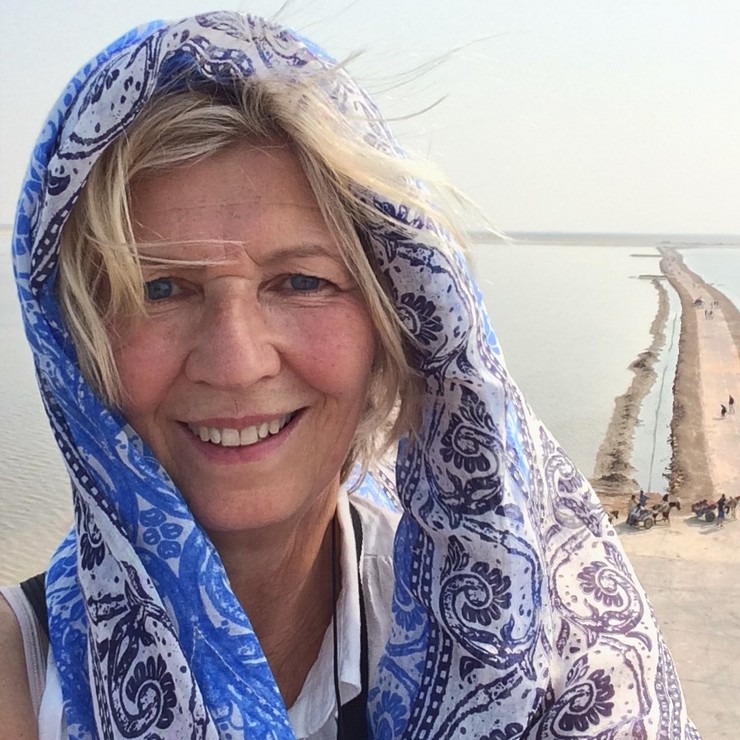
Jeannie Saville , Flavours of Mexico, MexicoIt is not surprising that UNESCO has added Mexican cuisine to its list of cultural treasures worth preserving. The variety and quality of Oaxacan food is awe inspiring and ranges from street food to creative chefs in top class restaurants. All aspiring young chefs should visit the Sunday market in Tlacolula, a real feast for the eyes and the palette. We have learnt a huge amount on this tour about life in Mexico and the problems of Mexico`s indigenous people.

Bill Dodd , Flavours of Mexico, MexicoHaving travelled to Mexico on various trips over the years I was surprised to find Oaxaca was so different. Many traditions that have died out elsewhere are still alive and kicking in Oaxaca. And the food is sublime.
